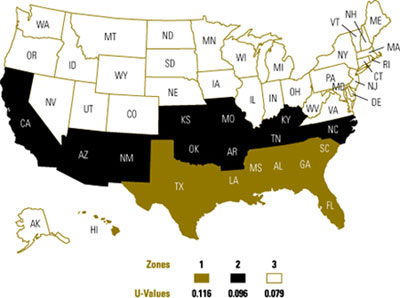
When purchasing a used manufactured home it can be easy to forget to check that the home is built to the specifications required for the location where you’re moving the home to. Manufactured homes are built to satisfy certain construction requirements based on the geographic location of where the home will be sited. This means, while one can enjoy the convenience of a mobile home, you must also consider to what standard it was built.
Make sure the home you’re purchasing was built to meet the wind zone requirements for the location where the home will be installed. There are 3 zones as you can see below. You can move a mobile home of a higher zone to your location, but you cannot legally have a home of a lesser zone placed in a higher zone location.
For example, If I live in Tallahassee, FL, I am in a location within wind zone 2. Say I’m trying to purchase a mobile home from Northern Alabama that was built for that Alabama location in zone 1. I wouldn’t be able to move the Alabama wind zone 1 home to my location in Tallahassee because my location requires a home that can withstand 100 mph winds and a zone 1 can only withstand 70 mph winds.

Wind zone map from Oliver Technologies
Next, you want to be sure your thermal zone equates to the area where your home will be located. Thermal zones are broken down into 3 zones, the most Southern coastal areas being a lower number 1 and cooler Northern areas being a zone 3. Thermal zones are based off of u-values, which gauge how much heat passes through different building materials. However much those materials “leak” measures how well the materials insulate the home. U – values are based off thermal zones and the interior temperature being a constant 70 degrees Fahrenheit. All of this complicated definition to say thermal zones are like wind zones in that they need to match or be a higher u-value to be placed in lower numbered zone.
For example, a home in Michigan is a thermal zone 3 and can be moved to Texas, a thermal zone 1, but the opposite cannot happen. Homes designed and constructed to a higher thermal zone can be installed in a lower thermal zone, but a thermal zone 1 home cannot be installed in either a thermal zone 2 or 3 area.
[caption id="attachment_2654" align="aligncenter" width="400"] Thermal Map from MHI.org
Thermal Map from MHI.org
We hope this was helpful in defining what wind and thermal zones are as well as helping you consider them before you purchase a home and have it moved. Be sure you know what your location allows and needs in terms of a manufactured home being moved to a piece of land.